The Beginning
My relationship with IT began somewhere in 1989 (I was 10 at the time), these were the times when Hungarians moved to Vienna for “Western” products: for a refrigerator, for a large batch of Donald chewing gums, and for computers. My mother, along with her neighbors, embarked on such a purchase journey and returned with a Commodore 64 with a cassette unit, at the time it was in the top 3 for home hobby machines in eastern Europe, the little guys’ dream, and the key to my future. At first, we were mostly just playing on it, often gathering classmates to play games together, in which case we cheered for each other in a heightened mood or ruined the joysticks in a row. Later, the repository was expanded with a 1541-II floppy unit, but in the meantime we preferred to order cassette games from Budapest from Zsolt Balogh, who was the founder-owner of the 576 Kbyte magazine that was starting at that time. I bought the first issue at a newsagent. From then on, I waited every month for when it would be released, but in parallel, I also bought the Commodore Magazine, which took a closer approach to computing from a programming viewpoint. Novotrade has released a lot of great textbooks, such as one of my favorites, "Tips and Tricks for the Commodore 64" or "The Basics of BASIC Programming on the C64," with plenty of great code which if one typed in, was able to create spectacular program codes and interpret those. The creative flow soon got me in, and like most programmers, I rewrote the codes and later wrote codes by myself. The process of learning is like this. I was also encouraged to publish my written codes, so I submitted some to the Commodore Magazine, which they published at that time (December 1991 and September 1992).
Commodore Magazine 1991/12.
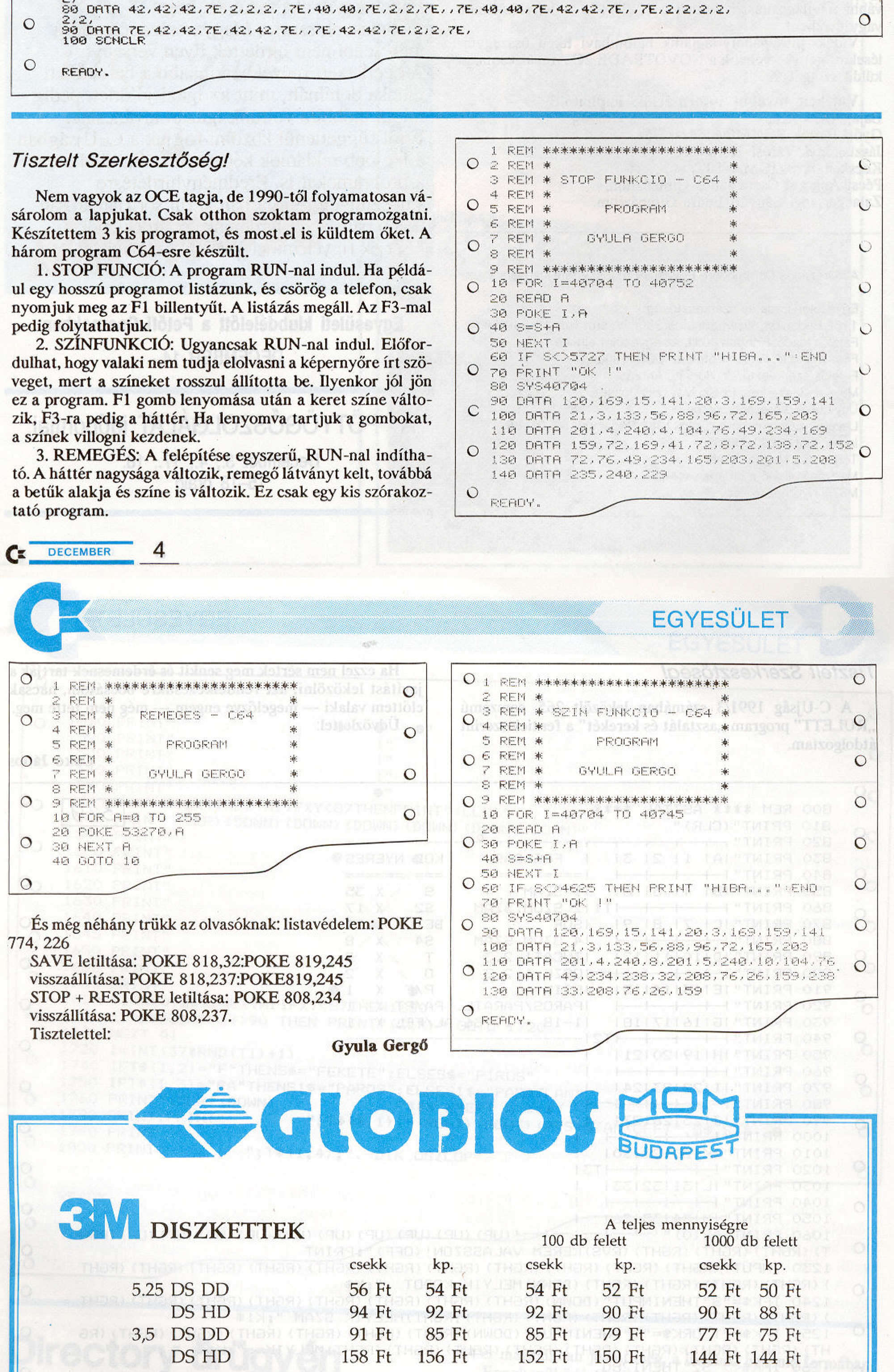
Commodore Magazine 1992/9.
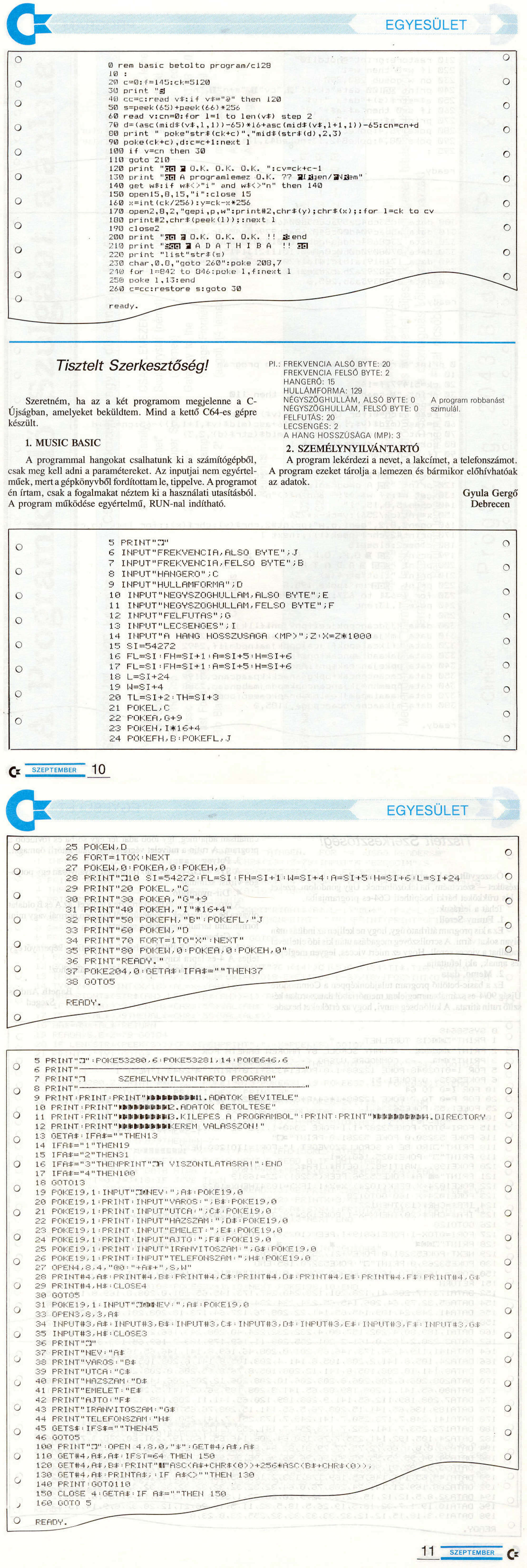
In the meantime in parallel, with my childhood friend Szabolcs Nagy, we were writing our game called “Big foot”, which was a great training ground based on the sprite technique. You had to jump over obstacles with a big foot car.
The PC ERA, high school yearsAcademic years
I was admitted to the Fazekas Mihály High School in Debrecen in 1992, then we bought our first PC, which was an AT 386 with a 128 Mb (!) winchester, not long after that the machine was expanded with a coprocessor, because the fast computation was needed by the aircraft simulators (e.g. Falcon 3.0). In high school, our enthusiastic and high-quality computer science teacher, Gyula Simon, made us friends with the Pascal programming language, at that time we were programming in Turbo Pascal for DOS on the lessons, and Borland Pascal ran at home under Windows 3.1. With my friend András Gábor (Kojak) we entered the János Garay XIII. National Computer Program Competition in 1996, locally it was in Szekszárd at Garay Gymnasium. That time we achieved 1st place in the user program category. We wrote a music composing software for PC that could create midi format music on AdLib and SoundBlaster sound cards using a “tracker” interface (such as Fast Tracker, but midi). It had its own file format, but it also handled midi. Such software did not really exist then, so the jury really liked it. A year after we also entered the competition in game category, and we took the 2nd place.

It was an adventure game, entitled “Eye for an Eye”, a so called “Point and click” type, like “Monkey Island” or “Maniac Mansion” from LucasArts. By then, we already had a team name with an animated logo: “Incognito,” a mysterious silhouette of a spy in a trench coat, with a hat, and had glowing eyes. Most of the coding was done by Kojak in Pascal and embedded assembly, and I did the graphics and music for it. I really loved this project, the graphics and animation were made with Autodesk Animator (AA) (PCX, GIF and FLIC formats), which was embedded in the game with a player code and buffered to prevent flickering transition between the images and the video. Then came graduation and the preparation for that washed away these hobby projects. I also graduated in computer science, which I concluded with a “computer operator high school diploma final exam certificate” (the predecessor of ECDL).
Academic years
In 1997, I was admitted to the University of Debrecen (back then it was Lajos Kossuth University, KLTE) to informatics and informatics librarian majors. This was later supplemented by the expansion of my field of interest with the inclusion of geography major studies. This was a completely different area than the one I had been moving around until then. Honestly, I was fumbling my way. This decision was definitely good because I met a lot of unique people and colleagues, I learned to appreciate hard work and its results. During my university years, I worked for the Department of Meteorology, the Department of Socio-Geography and Regional Development, but mainly for the Department of Mineralogy and Geology besides my studies, mainly with Gábor Németh (Tubás) and Zoli Püspöki. I took part in automation and sorting tasks, database building processes, sometimes in tenders, and soon my teachers and groupmates could count on me as a first-class associate. This was an excellent training track to achieve significant research results using IT in a field of science, from which many articles and publications were born. But that was the time when I wrote the software programs that are still outstanding from a scientific point of view: GeoGörbe and GeoPlot. The first implements the transfer of geophysical curves from a scanned sheet of paper to a database, and the other is for drawing drilling logs and geological sections. Later on, other people’s doctoral dissertations, articles with high impact factor, and a number of dissertations could be created at the department with the usage of these software programs.
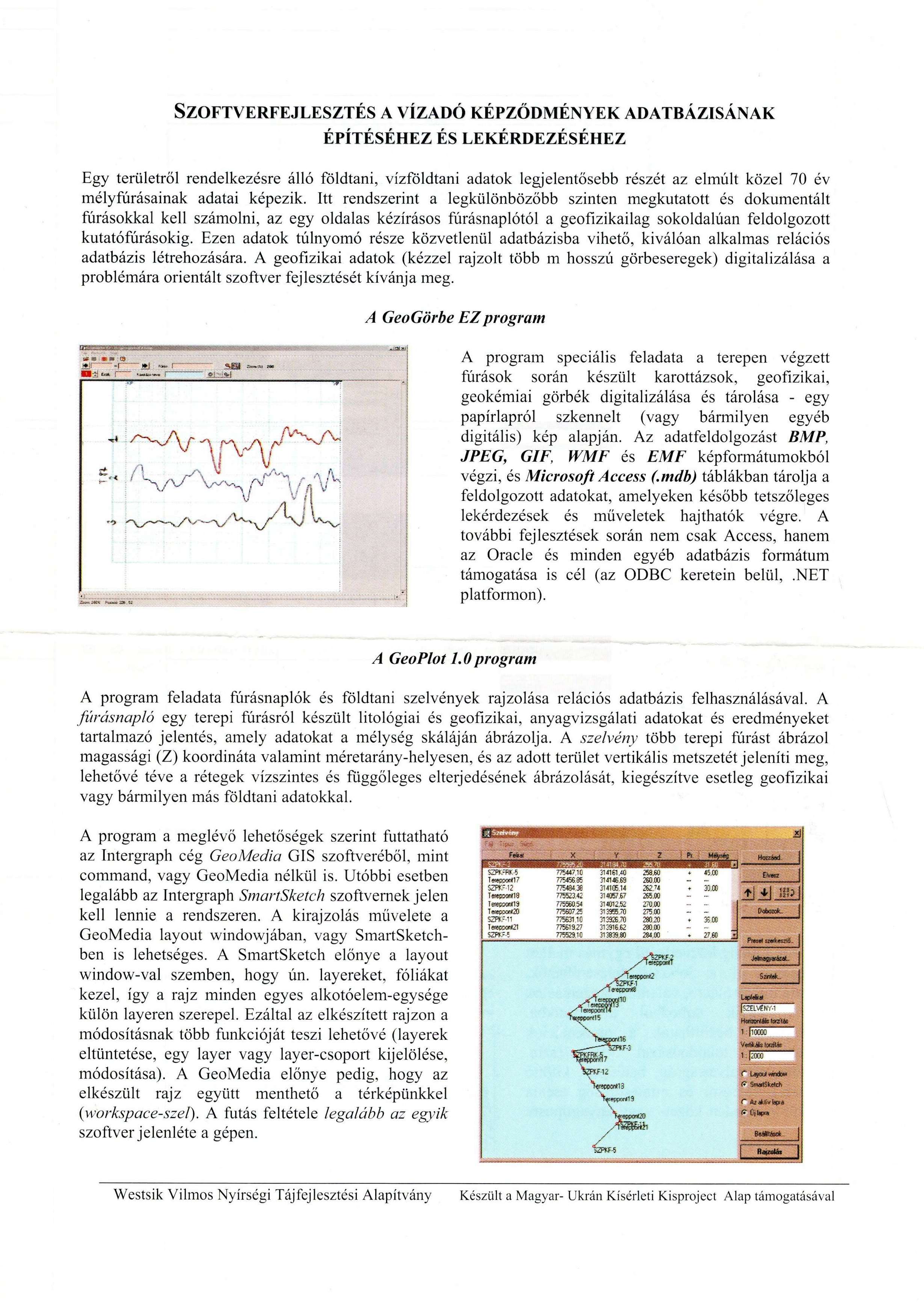

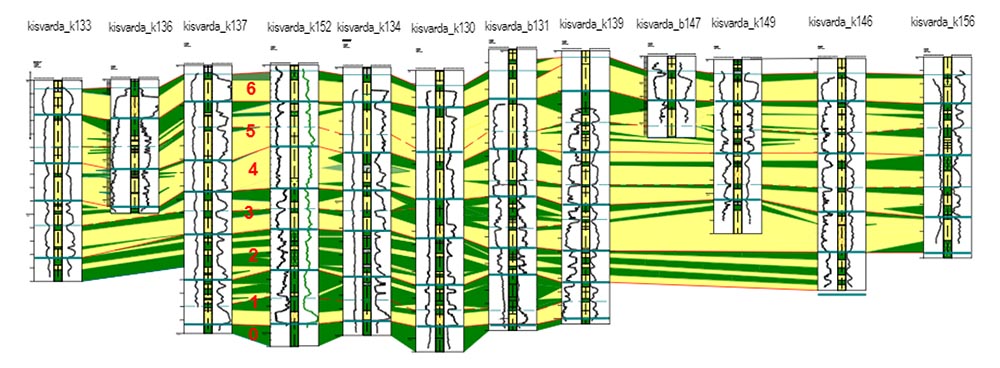
At the university, I met Laci Sütő, who was a teacher there at the time, and was also the organizer of the Less Nándor Memorial Hiking Tour. At that time, only a few hundred people took part in the power hiking, and Laci wanted to record the entries and make the start-up and arrival registration with computers. For this I made a software called Tour Admin for him, which he was able to do these, but it also printed a certification and made the results available on the web. After the initial hardware and network difficulties, the competitions were quite successful, more and more people came from year to year, "Less Nándi" became one of the biggest power hiking competition in the country.
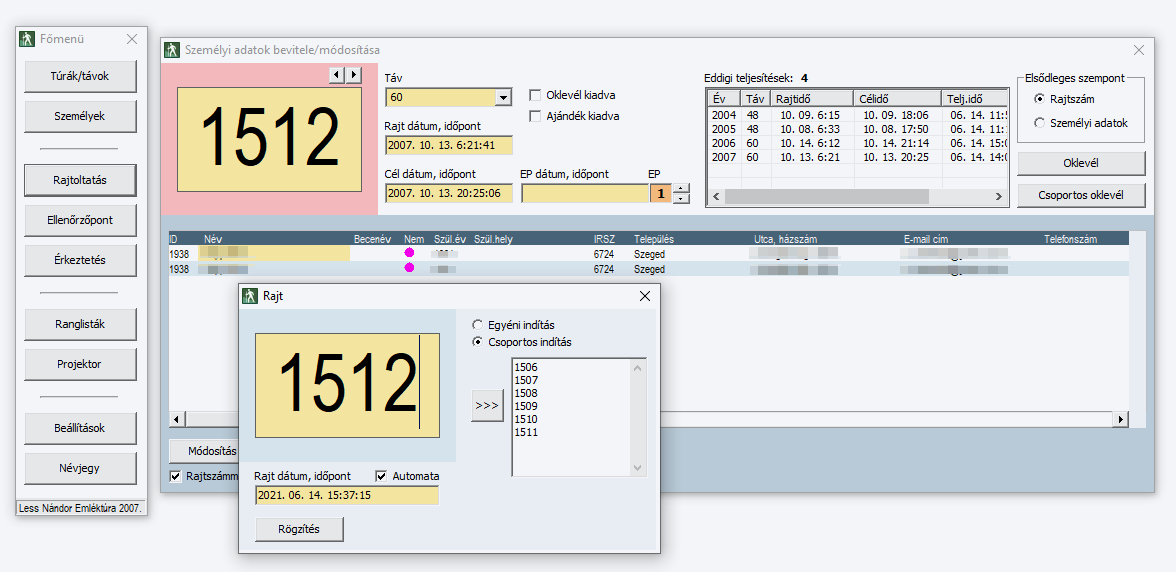
Later, the Szendrő Hiking Section also started using the software, I also helped for years there to organize a power hiking contest called Vitézlő. I have met very enthusiastic and cheerful people during these years, and participating in the organization of these competitions has enriched me with serious experience in teamwork, group and social responsibility.
World of work
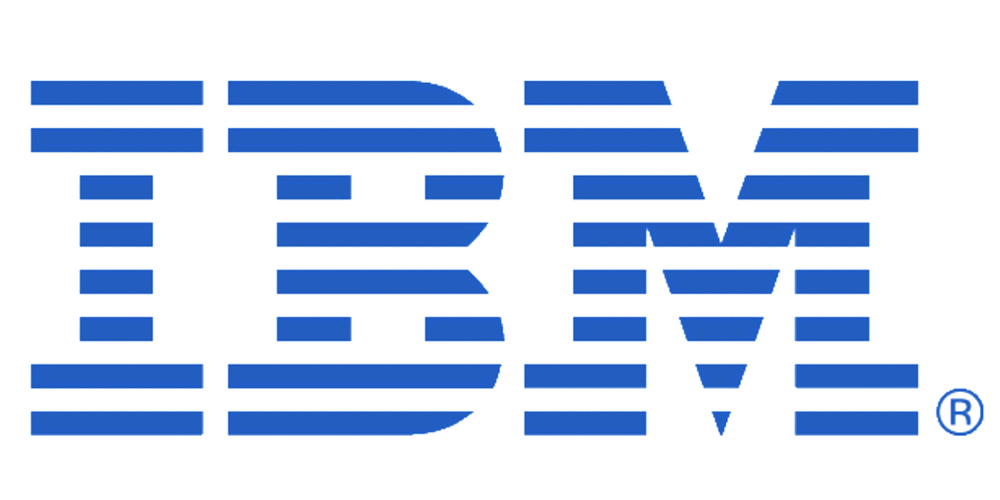 In 2007, my friend Lea Barcsai - who was working for IBM at the time in Budapest - said that they were looking for a technical support colleague and she wondered if I were interested in it? After a short preparation, I went for an interview and from the spring of 2007 I worked there at the Accounts Payable Center, which at the time was still in the VII. district on Wesselényi street, in the PricewaterhouseCoopers building. My job was multifaceted, basically it was writing SQL reports on invoices and vendors and automating them with scripts, but I was also involved in several side processes. I didn’t work for IBM for a long time, but during that short time, I absorbed a lot of information about multiculturalism, about this way of life, and about internal regulations. I met such brilliant colleagues as Atti Szabó, Lajos Tóth, Ricsi Kovács, Pisti Lévai, Atti Hernold, Adrián Szalai, Nikolaj Glebov, Peti Szatmári, Zsuzsi Barta, Ildi Vas and many others, all heavy-duty people among whom I felt that our attitude to work is similar. At IBM, under the leadership of Pisti Lévai, I also participated in a Six Sigma team work, which ended with an internal qualification at the Yellow Belt level.
In 2007, my friend Lea Barcsai - who was working for IBM at the time in Budapest - said that they were looking for a technical support colleague and she wondered if I were interested in it? After a short preparation, I went for an interview and from the spring of 2007 I worked there at the Accounts Payable Center, which at the time was still in the VII. district on Wesselényi street, in the PricewaterhouseCoopers building. My job was multifaceted, basically it was writing SQL reports on invoices and vendors and automating them with scripts, but I was also involved in several side processes. I didn’t work for IBM for a long time, but during that short time, I absorbed a lot of information about multiculturalism, about this way of life, and about internal regulations. I met such brilliant colleagues as Atti Szabó, Lajos Tóth, Ricsi Kovács, Pisti Lévai, Atti Hernold, Adrián Szalai, Nikolaj Glebov, Peti Szatmári, Zsuzsi Barta, Ildi Vas and many others, all heavy-duty people among whom I felt that our attitude to work is similar. At IBM, under the leadership of Pisti Lévai, I also participated in a Six Sigma team work, which ended with an internal qualification at the Yellow Belt level.
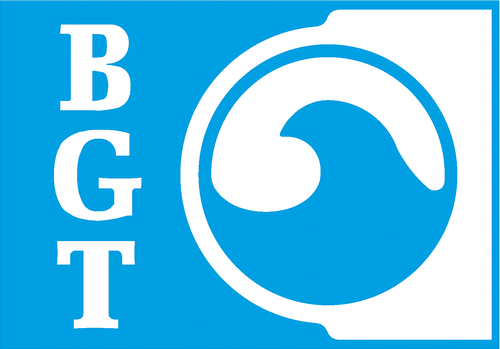 At the end of 2007, my former university acquaintance and friend, Béla Finta, called me over to BGT Hungaria Környezetechnológiai Kft., where I met the environmental services and earth sciences again. They needed a database and improvements, and they were looking for a self-propelled person to build and manage a datacenter and automate workflows. I threw myself into the work with great lust, I managed to speed up a lot of processes sometimes 10-20 times faster, or often reduce a 1 week work to 1 hour. Programming with great significance has also taken place, many great processes have since become the standard of the company and have greatly contributed to its growth, both in terms of headcount and sales. The central database has become the essential basis for the work to be done for our customers, in which we store tens of millions of records of the environmental status of their sites. I contributed to the research and compilation of reports through daily data mining and complex queries, automatic chart production and other automations. I think I realized here how much it means to be effective and how much it matters in the everyday life of a company, and its revenue. During the ten-odd years I spent here, I saw and experienced a lot of things, pretty much about the structure, the habits, and the everyday tasks of an entire company.
At the end of 2007, my former university acquaintance and friend, Béla Finta, called me over to BGT Hungaria Környezetechnológiai Kft., where I met the environmental services and earth sciences again. They needed a database and improvements, and they were looking for a self-propelled person to build and manage a datacenter and automate workflows. I threw myself into the work with great lust, I managed to speed up a lot of processes sometimes 10-20 times faster, or often reduce a 1 week work to 1 hour. Programming with great significance has also taken place, many great processes have since become the standard of the company and have greatly contributed to its growth, both in terms of headcount and sales. The central database has become the essential basis for the work to be done for our customers, in which we store tens of millions of records of the environmental status of their sites. I contributed to the research and compilation of reports through daily data mining and complex queries, automatic chart production and other automations. I think I realized here how much it means to be effective and how much it matters in the everyday life of a company, and its revenue. During the ten-odd years I spent here, I saw and experienced a lot of things, pretty much about the structure, the habits, and the everyday tasks of an entire company.
The idea of Allum Digital came in 2017, I wanted to build something that could be purely IT and media, and can be linked to any field in the market. But one of the most important goals was to bring the IT solutions closer to the people: not just a bank, an insurance company or a car factory could be the only ones that are in need of a - let's say, business management software -, but also the ordinary person in their daily lives - be it a hobby - can take advantage of simple programs that make their job easier for a few ten bucks (e.g. you need a simple solution to organize your books at home, or you suffer for weeks from copying a lot of data from Excel to Word at work and looking for some simple program to do it for you, or, for example, you need a unique website for your start-up).

 I’ve always been a solution-oriented person in any area of life, and I really found what I was looking for in applied IT: I implement the creative ideas of people who turn to me and look for solutions to their problems, usually through development, but sometimes just with a simple piece of advice. I’ve had many orders and own projects all the way through my college years, including quite high-volume ones, which are usually programmed by a team of 8-10 people. For the past 15 years, I have also worked as a freelancer in international teams through the oDesk (now UpWork) and Guru platforms. After all, this led me to recognize the opportunity to stand on my own, and - besides having my own customers, - to come up with my own desktop or SaaS products on the market.
I’ve always been a solution-oriented person in any area of life, and I really found what I was looking for in applied IT: I implement the creative ideas of people who turn to me and look for solutions to their problems, usually through development, but sometimes just with a simple piece of advice. I’ve had many orders and own projects all the way through my college years, including quite high-volume ones, which are usually programmed by a team of 8-10 people. For the past 15 years, I have also worked as a freelancer in international teams through the oDesk (now UpWork) and Guru platforms. After all, this led me to recognize the opportunity to stand on my own, and - besides having my own customers, - to come up with my own desktop or SaaS products on the market.